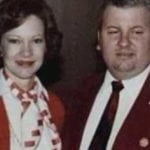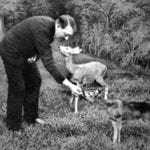 Music
Music  Music
Music  History
History 10 Less Than Jolly Events That Occurred on December 25
 Weird Stuff
Weird Stuff 10 Funny Ways That Researchers Overthink Christmas
 Politics
Politics 10 Political Scandals That Sent Crowds Into the Streets
 Weird Stuff
Weird Stuff Ten Bizarre Facts About The Doge Meme
 Our World
Our World 10 Ways Your Christmas Tree Is More Lit Than You Think
 Movies and TV
Movies and TV The 10 Coolest Stars to Set Sail on The Love Boat
 History
History 10 Things You Didn’t Know About the American National Anthem
 Technology
Technology Top 10 Everyday Tech Buzzwords That Hide a Darker Past
 Humans
Humans 10 Everyday Human Behaviors That Are Actually Survival Instincts
 Music
Music 10 Surprising Origin Stories of Your Favorite Holiday Songs
 History
History 10 Less Than Jolly Events That Occurred on December 25
 Weird Stuff
Weird Stuff 10 Funny Ways That Researchers Overthink Christmas
Who's Behind Listverse?

Jamie Frater
Head Editor
Jamie founded Listverse due to an insatiable desire to share fascinating, obscure, and bizarre facts. He has been a guest speaker on numerous national radio and television stations and is a five time published author.
More About Us Politics
Politics 10 Political Scandals That Sent Crowds Into the Streets
 Weird Stuff
Weird Stuff Ten Bizarre Facts About The Doge Meme
 Our World
Our World 10 Ways Your Christmas Tree Is More Lit Than You Think
 Movies and TV
Movies and TV The 10 Coolest Stars to Set Sail on The Love Boat
 History
History 10 Things You Didn’t Know About the American National Anthem
 Technology
Technology Top 10 Everyday Tech Buzzwords That Hide a Darker Past
 Humans
Humans 10 Everyday Human Behaviors That Are Actually Survival Instincts
10 Mysteries Behind Inexplicable Photos
It’s estimated we humans take around one trillion photos every single year. While the majority of them are likely either selfies or pornography (or some pleasing combination of the two), not every picture is so easily classified. Some are even deeply mysterious. Here are 10 photographic mysteries that have left the whole world baffled.
SEE ALSO: 10 Viral Photos That Were Proven To Be Hoaxes
10The Identities Of The Skyscraper Men

It’s one of the most iconic images in history. A group of men sit on a steel girder, hundreds of feet above New York, calmly eating their lunch. It’s been reproduced more times than every single other image on this list combined . . . and we don’t know anything about it.
This lack of knowledge includes the answer to seemingly simple questions like “who took it?” Though the picture’s a modern icon, its author’s identity remains unknown. For years, the shot was credited to Lewis Hine, but recent research says there’s no way Hine could have been responsible. The most likely candidate is the Rockefeller Center’s old photographic director, Charles C. Ebbets, but it could just have easily been PR men Thomas Kelley or William Leftwich or somebody else altogether.
But even if we’ve solved that mystery, there’s still the question of its subjects’ identities. Like the photographer, most of the men are completely anonymous. It wasn’t until 2012 that two were named definitively as Joseph Eckner and Joe Curtis, with another two tentatively identified as Matty O’Shaughnessy and Patrick “Sonny” Glynn. That still leaves seven guys who never bothered to tell anyone they were in one of the 20th century’s greatest pictures. As more time passes, it’s becoming less and less likely that their names will ever be known.
9The Identity Of The First Man Photographed

In 1838, a resident of Paris stopped to have his shoes shined on the Boulevard du Temple and accidentally made history. At that precise moment, Louis Daguerre was experimenting with his daguerreotype on a nearby rooftop and snapped a picture of the street. It took seven minutes to complete the exposure, which was so long that all the traffic became invisible. But our Parisian man just happened to spend those seven minutes standing still. As a result, he became the first photographed human in history. Beyond that, we know nothing about him.
Literally nothing. Regarding his life, looks, occupation, income, ideals, family life, and origins, we’re completely in the dark. We don’t even know for certain that he was a Parisian or that he was having his shoes shined. Some have suggested the image actually shows a man standing at a water pump. There’s even a school of thought that says he isn’t alone in the photograph. While the supposed shoeshine boy moved too quick to be captured, a blurred image at a window might indicate that the customer shared his unwitting honor with another unknown soul.
8When The First Color Photograph Was Taken

In 1861, Thomas Sutton and James Clerk Maxwell took three shots of a tartan ribbon through green, red, and blue filters. They then combined them to create a single image. Color photography was born. Unless, that is, it had already begun a decade earlier.
In winter 1851, the Daguerreian Journal, the world’s first professional photography magazine, received a letter. Written by the Rev. Levi Hill, it claimed a breakthrough with color pictures. Using a device known as a hillotype, the reverend had already captured 45 color specimens. The letter ended with a promise that Hill would unveil his prototype soon, along with an exhibition of his work.
Daguerreotype experts went nuts. It was the equivalent of hearing that some hick had just perfected virtual reality in his basement. But then a funny thing happened. Hill kept pushing back the date for his big reveal. He kept pushing it and pushing it until everyone gave up and called him a faker. Then he vanished into seclusion and was never heard from again. For decades after, everyone assumed he was simply a hoaxer.
Only, it might not be so simple. In the early 21st century, a group of experts analyzed the Smithsonian’s collection of hillotypes and found faint traces of color. They also found evidence that some of the slides had been altered by hand but maybe not all of them. It’s now impossible to say for certain whether Hill really did fake the lot or whether he honestly took the first color photographs. Maybe we will never know.
7What Happened To Alex Gardner’s Civil War Photos

The Civil War the first widely photographed conflict in history. It forever changed the way we viewed war, reporting, and images of death. A lot of this is thanks to one man: Alex Gardner.
Even if you don’t know Gardner’s name, you know his work. It was Gardner who took the shots of the dead at Antietam, the shots of the Lincoln conspirators being hanged, and the iconic portrait of a pre-assassination Lincoln. He took more and better pictures than anyone else on the battlefields, even as credit for the images went to his employer. When he died, many of his original negatives went missing. They could have even been lost forever had another photographer not tracked them down in 1893. The rediscovered photos were hailed as one of the most important photographic finds in history. Then they promptly vanished again.
To this day, we still have no idea where they went. A few may have made their way into museum collections, but the vast majority seem to have vanished into the ether. Some of the most valuable 19th-century negatives are still out there somewhere, now waiting to be rediscovered for the second time.
6The CSS Georgia Hoax
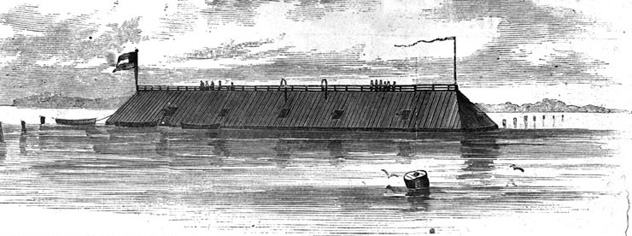
An ironclad Confederate warship launched in 1863 and scuttled 20 months later to prevent capture, the CSS Georgia was long thought to have never been photographed. Then, in the mid-1980s, John Potter came across what appeared to be a genuine picture of the Georgia at a yard sale. Unable to afford the asking price, he snapped a picture of the photo and sent it to historian friends. They all agreed it had to be the real deal. At this point, the original photo vanished.
According to Potter, the man who owned it moved away and disappeared off the face of the Earth. Over the next few years, the picture became legendary. With no blueprints or accurate likenesses of the Georgia known to exist, the photo would be utterly unique. The Army Corps of Engineers even launched a drive in 2014 to help locate it. Then, in April 2015, Potter admitted to the Associated Press that he’d faked the whole thing. It was a hoax image, a way for him to get attention. The CSS Georgia photo had never existed.
Or had it? In their report, the AP claimed Potter suggested he might be pulling an elaborate double hoax. A friend of Potter’s also claimed Potter had the real photo and was intending to sell it at a high price. It’s a mystery wrapped in a mystery, and we may never get a straight answer.
5The Mysterious Margate Family

The unknown Margate family are one of Britain’s most charming recent mysteries. In 2015, the National Museum of Scotland acquired a collection of Victorian-era photographs. Most were random shots of men in suits and women with stern expressions, but a small number stood out. Running through the collection were repeated images of the same family on vacation in the Kent town of Margate. As the photographs progressed, they grew older, the children getting taller and a baby sister suddenly appearing. It was like flicking through the story of an entire family—one we know absolutely nothing about.
The pictures themselves carry no formal identification, and nothing to give us any clue as to the people inside them. All we know is they were taken by a professional photographer called W. Colder, whose name appears in the background of one shot. Beyond that, we’re clueless.
It’s a shame, as the photos really let us into the lives of this small family. We see them posed, at rest and at play. We watch their joys, their lives, and their children’s growth, until suddenly they stop. Who were they? Why did they stop going to Margate?
4The Grim Sleeper Women

A vicious serial killer who preyed on mostly black women in the Los Angeles area, the Grim Sleeper is thought to have murdered at least 11 people in 25 years. However, some say the number is much higher. When current suspect Lonnie Franklin Jr. (due to be tried this summer) was arrested, police found over 180 photos of women in his home. Most had obviously been taken in Franklin’s house or car. A number appeared to be asleep, or unconscious, or worse. Chillingly, the Grim Sleeper’s only known survivor claims she was photographed in his car right after being shot and sexually assaulted.
Since the photos were first released in 2010, police have identified nearly all of the women shown. However question marks linger over several them. The LAPD’s official website still carries a graphic slideshow of 38 unknown people taken from Franklin’s collection. Some are ordinary pictures taken in bright daylight outside his house. Others are far darker. At least four of the photographed women appear to be unconscious at best. Another looks like she’s reacting in stark terror to something unseen. Not only are these women unknown—we don’t even know if they’re still alive.
3The Truth Behind The Falling Soldier Photo
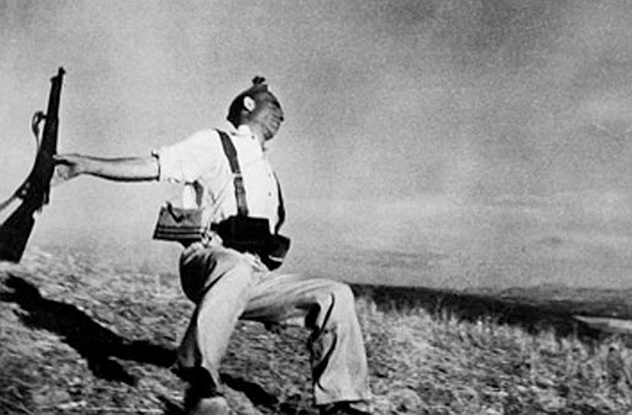
An image of a Republican soldier falling from a gunshot wound in the Spanish Civil War, Robert Capa’s photo is one of the most iconic pictures of war. It’s also one of the most fiercely debated. To this day, we have no idea whether it’s a genuine image or if Capa faked the whole thing.
The arguments for both sides are compelling. A 2009 analysis by the Spanish daily El Periodico seemed to pinpoint the location of the photo to outside the town of Espejo. While Espejo did receive its fair share of fighting, it wasn’t drawn into the war until three weeks after the photo appeared in the press. In addition, a collection of Capa’s negatives discovered in the mid-’90s appeared to show other staged pictures taken at the same time, suggesting his most famous image may have been staged, too.
On the other hand, experts at the International Center of Photography still believe the picture to be genuine. One school of thought claims it shows a staged photograph that suddenly turned real when a sniper picked off the posing soldier. However, this claim contradicts Capa’s account that the soldier died under machine gun fire. Until definitive proof emerges either way, the story behind the war’s most famous photograph will remain a mystery.
2The Tourist In The Reagan Red Square Photo
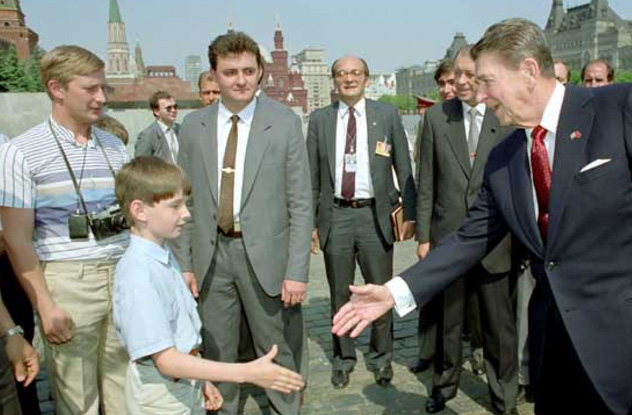
In 1988, Ronald Reagan made a trip to Moscow. As part of his visit, he took to Red Square to meet local Russians. While shaking hands with a young boy, the president had his picture snapped by a White House photographer. Nothing unusual about that. But then you look at the blond, slightly geeky tourist watching the encounter. According to several sources, that man may well be a young Vladimir Putin.
The link was first suggested in 2009, and it was immediately shot down by Russia. However, it has since persisted for several reasons. The first is that we now know the KGB dressed some of their agents up as ordinary Russians and got them to ask Reagan difficult questions. Putin was a member of the KGB at the time, so his appearance there wouldn’t be unlikely. The second reason is that it really does look like a younger version of the current leader of Russia.
Pete Souza, who took the picture, today insists that the blond man is a young Putin. For his part, Putin’s spokespeople have strenuously denied the encounter, saying he was working in Dresden at the time. What do you think?
1The Nameless Khmer Rouge Victims

The Cambodian genocide under Pol Pot’s Khmer Rouge threw up its fair share of horror stories. None are quite as horrifying as that of S-21. A former school converted into an interrogation center, S-21 held as many as 17,000 people during the four years of Pol Pot’s reign. Less than 10 of them survived. Inmates were tortured for days on end then driven out to the countryside, beaten to death, and thrown in mass graves. The saddest part is we still don’t know who most of them were.
The guards at S-21 did keep records. Thousands of photographs have since surfaced of the prisoners, with more coming in all the time. Many are now known only by their pictures. When S-21 was finally abandoned, nearly every photo was separated from its folder. Of the 6,000 pictures currently known, the vast majority feature people who are unidentified.
Ranging from frightened dissidents, to somber old men, and young children with tears in their eyes, the faces are all anonymous. Their names, their stories, and their lives were all wiped out. Today, we can only look at their images and wonder who they were and how the Khmer Rouge could feel they needed to be erased from history.
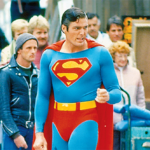

![10 Creepiest Photos Of Victims Taken By Serial Killers [DISTURBING] 10 Creepiest Photos Of Victims Taken By Serial Killers [DISTURBING]](https://listverse.com/wp-content/uploads/2018/09/Regina-Kay-Walters-featured-2-150x150.jpg)
